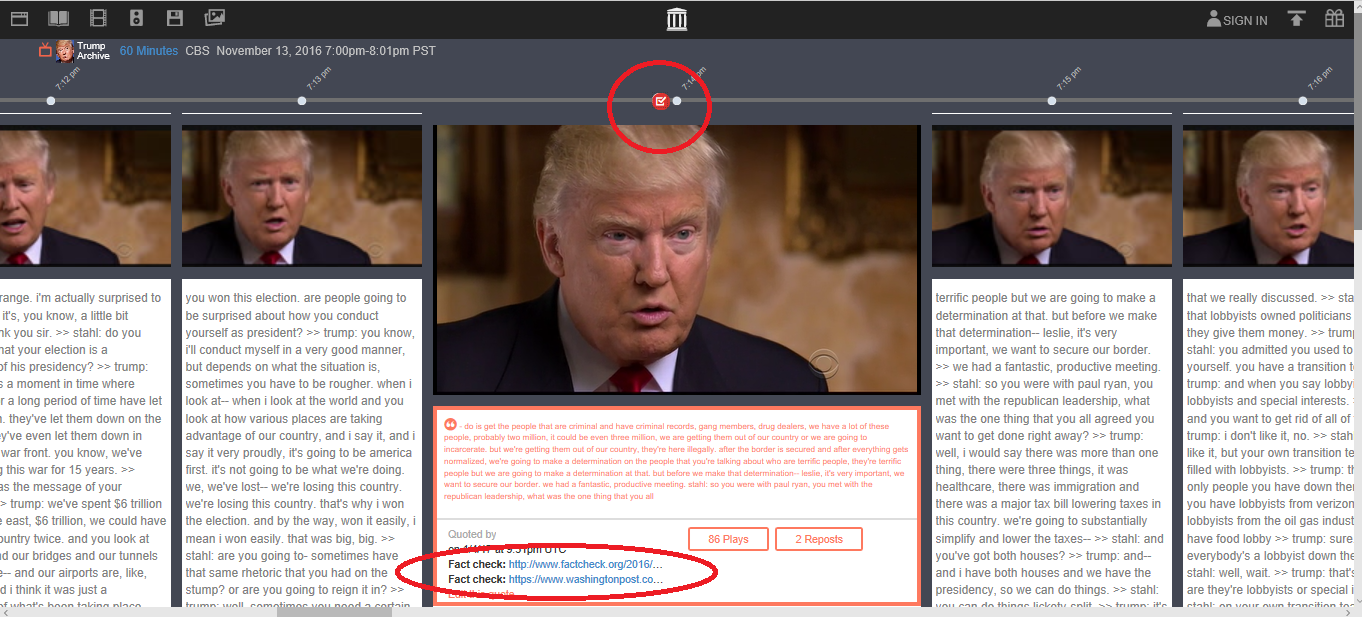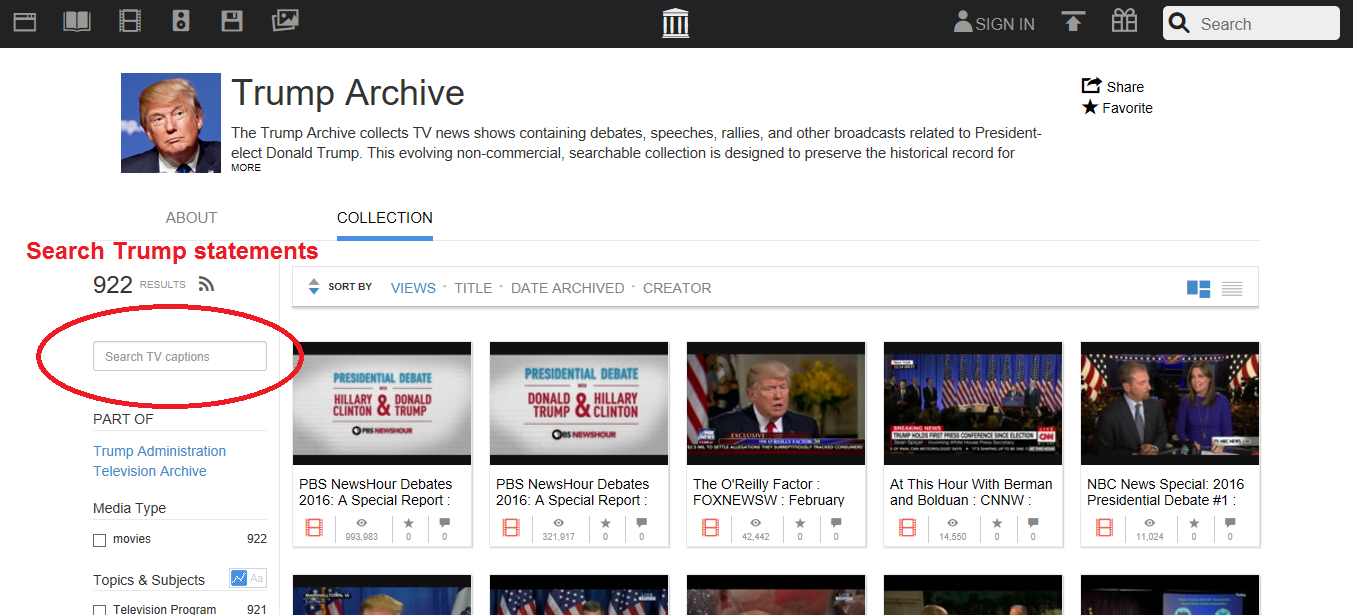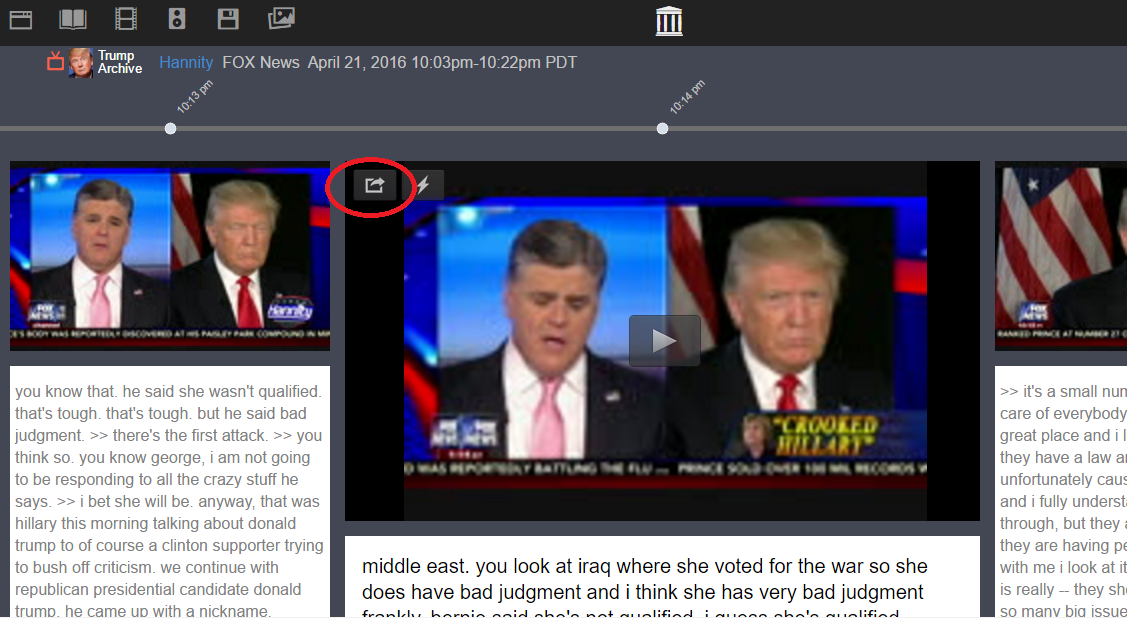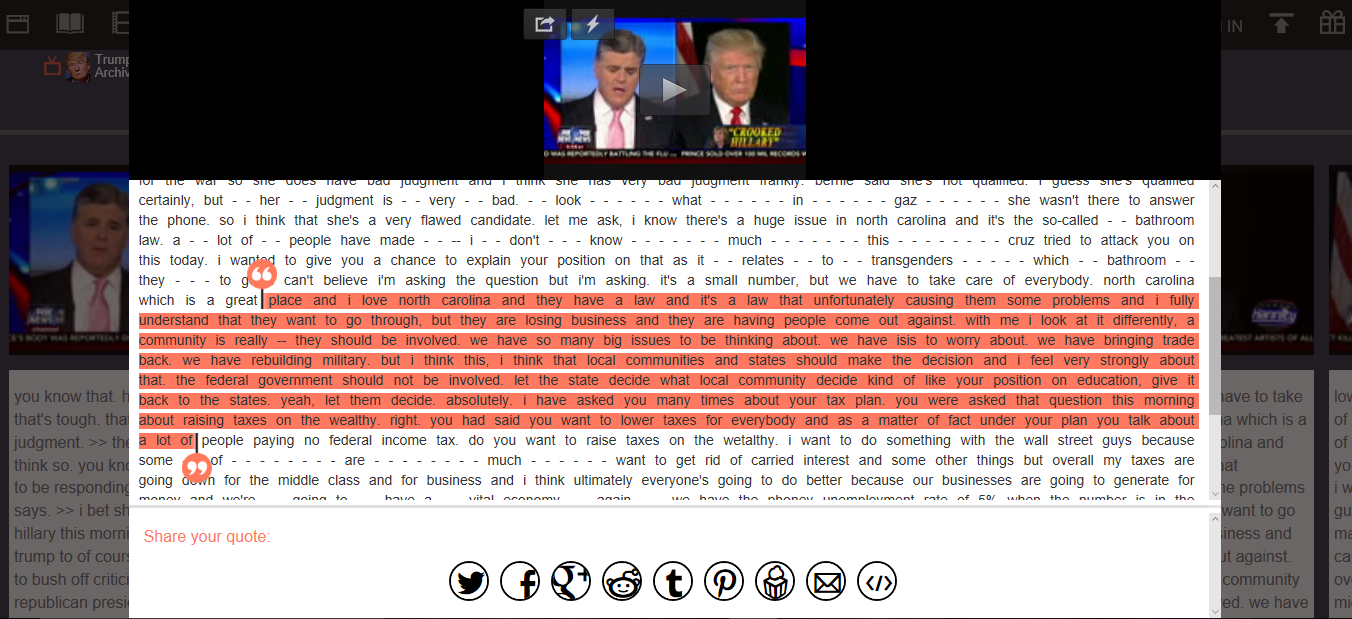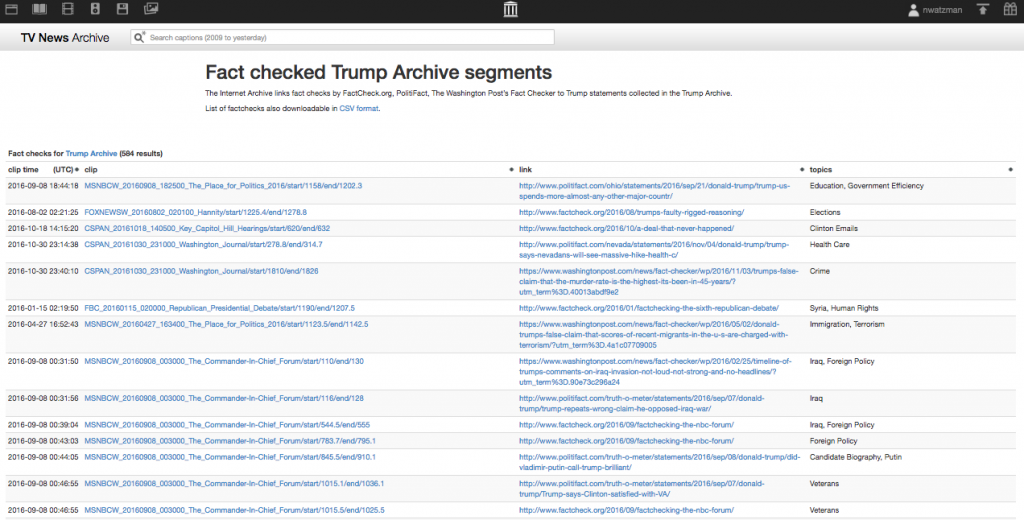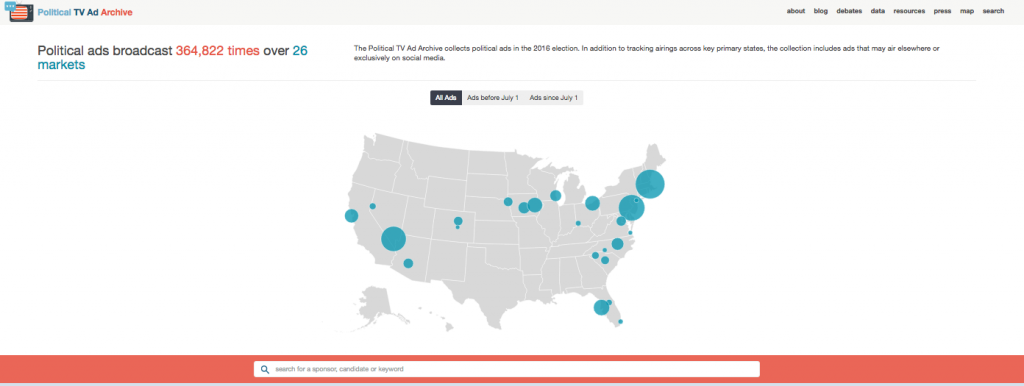By Katie Dahl
In this week’s roundup of fact-checked TV news from the TV News Archive, our fact checking partners–FactCheck.org, PolitiFact, and The Washington Post‘s Fact Checker–dug into statements from congressional leaders and the Trump administration about the proposed American Health Care Act.
Claim: the Congressional Budget Office reported the American Health Care Act will decrease premiums (yes and no)
Although one of the most popular headlines that came out of the Congressional Budget Office (CBO) report was that 24 million fewer Americans would have health insurance as a result of the American Health Care Act (AHCA), House Speaker Paul Ryan, R., Wis., chose to emphasize another significant one–the prediction that the AHCA would lower premiums.
PolitiFact’s Tom Kertscher wrote, one, that this claim is specific to “the roughly 7 percent of Americans who buy health insurance on their own because they aren’t covered by an employer or a program such as Medicaid.” Two, “[i]n 2018 and 2019, average premiums would be 15 percent to 20 percent higher than under Obamacare… mainly because the penalties under Obamacare for not getting insurance would be eliminated, ‘inducing fewer comparatively healthy people to sign up.’” But then, three, “[p]remiums would start to drop in 2020. And by 2026, the premiums, on average, would be 10 percent lower than they would have been under Obamacare.
That’s expected for several reasons: The GOP legislation would provide grants to states that could be used to reduce premiums; the bill would eliminate a requirement for insurers to offer plans covering certain percentages of health care expenses; and a younger mix of enrollees.”
That’s one angle. Another is that although premiums may go down for some, like younger people, they will be “‘20 percent to 25 percent higher for a 64-year-old’ by 2026, even though average premiums would be 10 percent lower compared with current law,” wrote Lori Robertson and Eugene Kiely at FactCheck.org.
If you want information about the 24 million fewer people being uninsured claim, read more from Robertson and Kiely at FactCheck.org.
Claim: 1/3 of counties only have one health insurer left (true)
President Donald Trump, while talking about current health insurance options for people looking for coverage through the exchanges, made this statement. “One-third of the counties–think of it, one-third—only have one insurer left.” According to Lauren Carroll of PolitiFact, this is true. “In 32 percent of counties, individuals looking to buy health insurance through the Affordable Care Act online marketplace have just one choice for their insurance provider, according to an analysis by the nonpartisan Kaiser Family Foundation, last updated in November 2016.” She went on to write “of the approximately 9.2 million people enrolled in the Affordable Care Act exchanges in 2017, about 1.9 million could only purchase insurance from one company.”
Claim: Obamacare didn’t have any hearings in the House (clearly wrong)
White House Budget Director Mick Mulvaney hit the Sunday political talk show circuit this weekend to, among others, make this claim about the proposed American Health Care Act. “We already had two committee hearings, which I believe is two more than Obamacare had in the House.” Glenn Kessler, reporting for The Washington Post’s Fact Checker, looked into the legislative history of Obamacare, or the Affordable Care Act, and found this. “We have about 20 hearings, many aired on C-SPAN. That’s 18 more than the current replacement bill…. So Mulvaney’s comments are clearly wrong.”
He admitted, though, that while the trip through the legislative process for the Affordable Care Act included hearings, it was also complex, and as one expert he interviewed put it, “the ‘ad hoc’ process that led to the ACA is ‘an illustrative example of modern lawmaking, especially for major initiatives.’”
Claim: Emergency room visits increased under the ACA (mostly true)
Health and Human Services Secretary Tom Price talked about a specific Obamacare goal to lower visits to the emergency room, where, PolitiFact noted, they “by law cannot turn patients away, [but] they can become a health care provider of last resort, even for more minor conditions that could be handled just as well–and more inexpensively–in a doctor’s office.” Price said that the Obama administration claimed “they were going to be able to drive folks away from one of the most expensive areas for the provision of health care, and that is the emergency rooms… In fact, they did just the opposite.”
Louis Jacobson reported for PolitiFact that “Price has a strong case.” He went on to write that while “the data varies a bit from study to study, the findings generally fail to provide any evidence that emergency room use has decreased after the law [Affordable Care Act] took effect. Indeed, several studies found increases in emergency room use, though modestly. Price overstated the case slightly, but he’s basically correct. We rate the statement Mostly True.”
Claim: The number of people who weren’t eligible for Medicaid coverage before the ACA, but have it now, is small (false)
While Secretary Price got it right on emergency rooms, a statement he made on Medicaid was rated “False” by PolitiFact’s Aaron Shockman. On “Meet the Press” last Sunday, Price said the “number of individuals who actually got coverage through the exchange who didn’t have coverage before, or who weren’t eligible for Medicaid before is relatively small. So we’ve turned things upside down completely for 3 million, or 4 million, or 5 million individuals.”
Shockman’s analysis is that Price “made the case that the number of new people insured as a result of Obamacare can be overstated.” But, “[n]onpartisan health care analysts at the Kaiser Family Foundation have concluded that, as of March 2016, more than 11 million Americans have gained access to health care as part of the Medicaid expansion. As we noted, an additional 3.2 million Americans signed up for Medicaid but were previously eligible.”
The second pool of people Price referred to also seems problematic. “Finding data on the number of previously uninsured people who signed up for care through a health care exchange is more challenging. But the numbers that do exist further undercut Price,” reported Sharockman. “In 2015, researchers at the nonpartisan RAND Corporation estimated that 4.1 million previously uninsured Americans had gained access through a health care exchange or marketplace. That’s roughly 15 million Americans who weren’t insured who now are, which is three to five times the number Price used.”
To receive the TV News Archive’s email newsletter, subscribe here.

